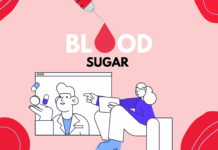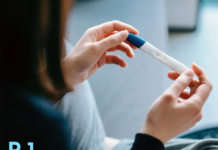While our bodies possess remarkable regenerative capabilities, the healing process can sometimes result in the formation of scars.Tissue repair is a complex and dynamic process that occurs in response to injury or damage to the body.
In this article, we will explore various methods that hold promise in promoting optimal healing, reducing scars, and restoring tissue functionality.
How does the scar affect us?

Scars can have various effects on individuals, both physical and psychological. Let’s explore the impact of scars on our lives
Physical Impact
Restricted Movement
Depending on the size and location of the scar, it may limit the range of motion and flexibility of nearby joints or tissues.
Sensory Changes
Scars can alter sensation in the affected area, leading to numbness, hypersensitivity, or changes in temperature perception.
Functional Impairments
In some cases, scars can affect the normal functioning of organs or tissues, leading to complications or discomfort.
Emotional and Psychological Impact
Self-Image and Body Confidence
Scars can significantly impact an individual’s self-esteem and body image, especially if they are visible or located in prominent areas.
Social Interactions
People with visible scars may experience social anxiety or discomfort due to the attention or questions they receive from others.
Emotional Distress
Scars can serve as reminders of traumatic events or accidents, triggering emotional distress, post-traumatic stress disorder (PTSD), or depression.
Impact on Daily Activities
- Clothing Choices: Individuals may feel the need to select clothing that conceals their scars, limiting their fashion choices and personal expression.
- Avoidance Behaviors: Some individuals may avoid certain activities or situations that could expose their scars or potentially cause re-injury.
- Impact on Relationships: Scars can affect intimate relationships, as individuals may feel self-conscious or fear judgment from their partners.
Professional and Academic Concerns
- Career Limitations
Depending on the profession, visible scars may impact employment opportunities or advancement, especially in fields where appearance is valued.
- School environment
Scars can affect a student’s self-confidence and even lead to bullying or discrimination from peers. The consequences of it are extremely serious.
Understanding the Tissue Repair Process

Inflammatory Phase
The initial response to tissue injury involves inflammation, aimed at removing damaged cells and initiating the repair process.
Controlling inflammation through techniques such as cryotherapy and non-steroidal anti-inflammatory drugs (NSAIDs) can influence scar formation.
Proliferative Phase
Fibroblasts play a crucial role in this phase by producing extracellular matrix (ECM) components necessary for tissue regeneration.
Growth factors, such as platelet-derived growth factor (PDGF) and transforming growth factor-beta (TGF-β), can be utilized to enhance fibroblast activity and ECM synthesis.
Remodeling Phase
Collagen deposition and organization occur during this phase, shaping the final scar tissue.
Techniques such as mechanical stimulation and targeted drug delivery can modulate collagen synthesis, promoting a more organized and less visible scar.
Conventional Approaches to Enhance Tissue Repair
Wound Care and Dressings
Appropriate wound management, including cleansing, debridement, and moist dressings, supports the healing process and reduces scar formation.
Advanced dressings, such as hydrogels and silicone sheets, have shown promising results in improving wound healing outcomes.
Surgical Techniques
Precise surgical techniques, including suturing, minimally invasive procedures, and tension-reducing methods, contribute to better wound closure and reduced scarring.
The use of absorbable sutures and tissue adhesives minimizes scar formation and enhances cosmetic outcomes.
Scar Management
Various scar management approaches, including massage, silicone gel sheets, and corticosteroid injections, can help reduce scar visibility and improve tissue flexibility.
Emerging technologies like laser therapy, microneedling, and fractional radiofrequency have shown potential in scar remodeling and improving skin texture.
Emerging Strategies for Enhanced Tissue Repair
Tissue Engineering and Regenerative Medicine
Tissue engineering approaches, including the use of scaffolds, stem cells, and growth factors, offer the potential to regenerate damaged tissues and minimize scarring.
Innovative techniques like 3D bioprinting enable the precise fabrication of tissue constructs for transplantation and enhanced regeneration.
Gene Therapy
Gene therapy holds promise in promoting tissue repair by delivering therapeutic genes that enhance wound healing processes, such as angiogenesis and collagen synthesis.
Controlled gene expression using viral vectors or non-viral delivery systems presents a novel avenue for scar reduction and tissue repair.
Biomaterials and Drug Delivery Systems
Advanced biomaterials and drug delivery systems enable targeted and sustained delivery of therapeutic agents, growth factors, or small molecules to promote tissue repair and minimize scarring.
Nanoparticles, hydrogels, and microneedle patches are examples of innovative platforms that offer controlled and localized release of bioactive compounds.
Conclusion
Enhancing tissue repair and reducing scars represent significant goals in the field of medical research and clinical practice. Continued research, collaboration, and innovation in this domain hold the potential to revolutionize the way we approach tissue repair, bringing us closer to a future where scars are less visible, and functional tissue restoration becomes a reality.
By Health Medici and GPT



















